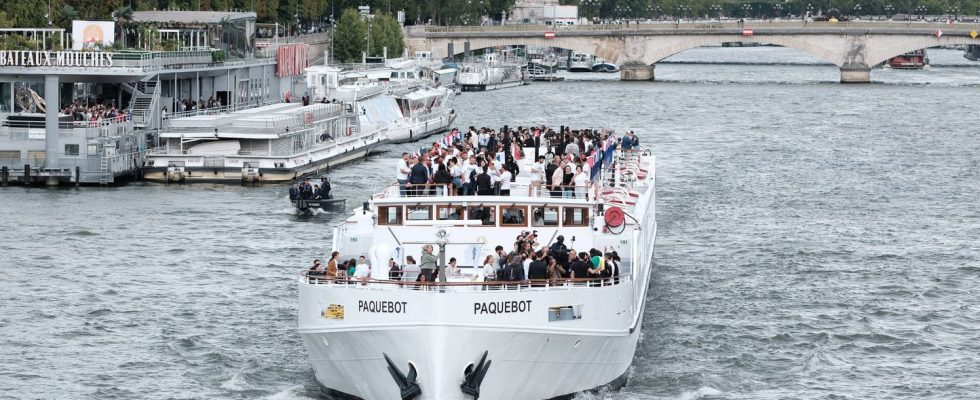The opening ceremony of the 2024 Olympic Games on the Seine, which will be attended by 220,000 spectators on July 26, will require an exceptional security system over the six kilometers requisitioned, between the Austerlitz bridge and the Iéna bridge. This Thursday, the prefect of police Laurent Nunez, accompanied by that of Paris Marc Guillaume, the mayor Anne Hidalgo and the president of the Organizing Committee Tony Estanguet, presented the main points. Here’s what you need to remember.
Installation of infrastructure from June 17
The stands which will welcome spectators on the upper part of the platforms will be installed from June 17, on their lower part from the 26th. During this work, pedestrian and car traffic will be impacted during the day, but not in the evening or week ends. From July 1, work will begin on the bridges. Details are available on the “Anticipate the Games” website.
“We tried to compress the assembly times as much as possible, once the elements are in place, we reopen the access,” explains Pierre Rabadan, sports assistant at Paris town hall. We have organized things so that life continues as normally as possible until July 26. »
Establishment of security perimeters from July 18
Here we enter the heart of the system. Eight days before the opening ceremony, i.e. July 18, two restriction perimeters will come into force: a gray perimeter, called anti-terrorist, in the direct vicinity of the Seine, and a red perimeter of traffic restriction, a little wider.
To access the first, you will have to show your credentials. “Everyone will be subject to a certain number of checks, whether on foot, by bike or in a car,” warns Laurent Nunez. You will not be able to move around freely, you will have to present proof of entry. » All buildings along the Seine are affected, which represents around 20,000 people. The latter, as well as traders, will first have to register on a platform which will go online on May 10.
The red zone corresponds to a perimeter prohibiting motorized traffic, however with exemptions for people who work, delivery people, etc. A summary table will be published this weekend. “This system will cut Paris in two for a week, it is a very significant constraint,” recognizes the police prefect. Around ten passages will allow you to cross, without entering the secure zone: the bridges of Sully, Notre-Dame, des Invalides and the Senghor footbridge, in particular.
D-day
The system in place since the previous week is valid until 1 p.m. Then, we move into ceremony mode. Only spectators with tickets can enter. No exemptions are granted, except for emergency vehicles. The only cars that will circulate will be those of the organization, heads of state or dignitaries who will attend the show. “It will be very strict, the controls will be very, very thorough,” indicates Laurent Nunez.
Systematic control whether in vehicle or pedestrian. It will be necessary to systematically register on a platform put online on May 10, as previously indicated by the Minister of the Interior Gérald Darmanin.
No private security concerns
Although the mobilization of law enforcement will be detailed “another day”, it was still discussed during this presentation. Thus, “of the 2,000 municipal police officers, 1,000 will be deployed on the site,” announced Anne Hidalgo. Furthermore, and “unlike from what we read in the press », observed Marc Guillaume, “there is no failure in terms of private security”. “Cojo has contractually secured 98% of its needs,” added Tony Estanguet. The State, for its part, stands ready to mobilize the forces that will be necessary, but “there is no concern on this point”, insisted Laurent Nunez.
What about plans B and C?
The intervention of the President of the Republic last week concerning fallback plans in the event of a terrorist threat caused a lot of talk. “There are plans B and C, we are preparing them in parallel,” declared Emmanuel Macron in particular. Laurent Nunez did not deny it, of course, but wanted to clarify things: “This presentation demonstrates that we are working collectively on a plan A. The president said that there are contingency plans planned in the event of an emergency. terrorist attacks, but we don’t put ourselves in that situation. There is no clear threat against our country. »
“Safety is the number 1 priority for everyone. We have invested 350 million euros on this subject, which is unprecedented in the history of the Olympic Games, because we are well aware of the context in which we are,” defended Tony Estanguet.

